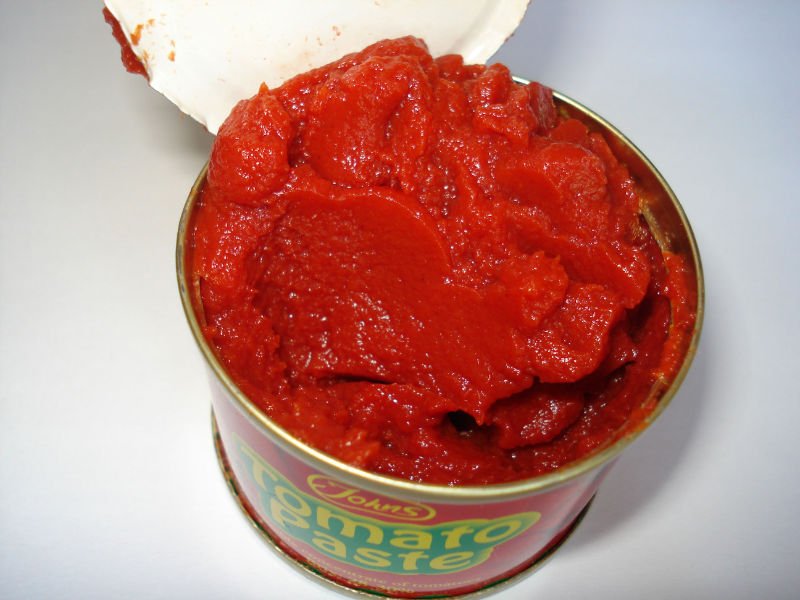The Versatile Red Gem: A Comprehensive Guide to Tomato Paste
Introduction:
Tomato paste is a popular culinary staple derived from tomatoes. Known for its concentrated flavor and vibrant color, tomato paste offers a wide array of culinary applications. It has become a must-have ingredient in many households and professional kitchens worldwide. This guide aims to provide a comprehensive summary of tomato paste, including its origins, production process, nutritional value, culinary uses, and storage tips.
Origins and Production Process:
Tomato paste traces its roots back to the ancient civilization of the Aztecs in Mexico, where they used sun-dried tomatoes for preservation purposes. Over time, tomato paste production evolved, and techniques were refined. Today, the process typically involves harvesting ripe tomatoes, removing the skin and seeds, and cooking down the tomato pulp into a concentrated paste. The paste is then strained to achieve a smooth consistency before being packaged for various culinary uses.
Nutritional Value:
Tomato paste is not only loved for its flavor but also for its nutritional benefits. It is rich in vitamins A, C, and K, as well as antioxidants like lycopene—an important carotenoid that promotes heart health. Additionally, tomato paste contains significant amounts of minerals, including potassium, iron, and calcium, making it a worthwhile addition to a balanced diet.
Culinary Uses:
Tomato paste is an essential ingredient in many dishes across different cuisines. Its concentrated nature adds depth and intensity to recipes. Some of the most common culinary uses of tomato paste include:
1. Sauces and Soups: Tomato paste forms the base for numerous sauces, including classic marinara, bolognese, and arrabiata. Additionally, it adds thickness and flavor to stews, soups, and chili recipes.
2. Pizza and Pasta: From traditional Neapolitan pizzas to creamy pasta sauces, tomato paste plays a central role in achieving the desired flavor profile in these dishes.
3. Curries and Ethnic Cuisines: Tomato paste is often used in Indian, Middle Eastern, and Latin American cuisines to add color and tanginess to curries, rice dishes, and stews.
4. Sandwiches and Burgers: A dollop of tomato paste can elevate the taste of sandwiches, burgers, and sliders, providing a burst of flavor that complements other ingredients.

5. Dressings and Marinades: Tomato paste can be incorporated into homemade dressings and marinades, offering a tangy element to enhance the overall taste of salads, grilled meats, and vegetables.
Storage Tips:
Proper storage is essential to maintain the quality and freshness of tomato paste. Here are some tips to ensure its longevity:
1. Unopened cans or tubes of tomato paste can be stored in a cool, dry place, such as a pantry or cupboard, away from direct sunlight.
2. Once opened, transfer any unused tomato paste to an airtight container and refrigerate. It can typically be stored for up to two weeks.
3. To prevent waste, consider freezing tomato paste in small portions using an ice cube tray. Once frozen, transfer the cubes to a resealable freezer bag or container.
Buying Considerations:
When purchasing tomato paste, there are a few factors to consider:
1. Quality: Look for tomato paste made from high-quality, vine-ripened tomatoes for the best flavor and nutritional value. Check the ingredient list to ensure there are no added sugars or preservatives.
2. Packaging: Tomato paste is commonly available in cans or tubes. Both options have their advantages: cans are often more cost-effective, while tubes offer convenience and the ability to use small amounts at a time.
3. Organic or Conventional: Choose between organic tomato paste, which is produced without synthetic pesticides or genetically modified organisms, and conventional options, which may have been grown with the use of such substances.
4. Brand Reputation: Consider reputable brands that prioritize quality and sustainable sourcing practices.
Conclusion:

Tomato paste is a versatile ingredient that enhances the taste of numerous savory dishes. It has a rich history, a unique production process, and offers impressive nutritional value. From complementing pasta dishes to enriching soups and stews, tomato paste is a pantry staple that adds depth and complexity to a variety of recipes. By understanding its origins, uses, and proper storage techniques, one can fully appreciate the vibrant red gem that is tomato paste.Exploring the Business Side of Tomato Paste: Market Trends, Key Players, and Sustainability Initiatives
1. Market Overview:
The global tomato paste market has been experiencing steady growth over the years, driven by the rising demand for convenience food products and the increasing popularity of ethnic cuisines. The market is expected to continue its upward trajectory, fueled by the expanding foodservice industry, changing consumer preferences, and the introduction of innovative product variations.
2. Key Players in the Market:
Leading players in the tomato paste industry have established a strong presence globally. Companies such as ConAgra Brands, The Kraft Heinz Company, Del Monte Foods, and Chalkis Health Industry dominate the market, consistently offering a range of tomato paste products to cater to diverse consumer needs. Additionally, regional players and smaller manufacturers play a significant role in supplying tomato paste to the local markets.
3. Product Variations and Innovations:
In recent years, manufacturers have been introducing variations of tomato paste to cater to the evolving consumer demands. This includes organic tomato paste options, low-sodium variants, and products made from specific tomato varieties to provide unique flavors. Moreover, innovations in packaging, such as squeeze tubes and portion-sized packets, have enhanced convenience for consumers.
4. Growing Sustainability Initiatives:
The tomato paste industry has recognized the importance of sustainability and has taken significant steps towards reducing its environmental impact. Many companies have implemented sustainable sourcing practices, working closely with farmers to ensure responsible cultivation and strict quality control measures. Additionally, efforts are being made to reduce packaging waste and explore eco-friendly alternatives.
5. Importance of Supply Chain Management:
Efficient supply chain management plays a crucial role in the tomato paste industry, ensuring the timely delivery of quality products to consumers. From procuring high-quality tomatoes to maintaining optimal storage conditions and coordinating the distribution network, effective supply chain management is essential in meeting market demand and maintaining product freshness.
6. Global Trade and Market Dynamics:
The tomato paste market is highly influenced by international trade dynamics. Major tomato-producing countries like China, the United States, Italy, and Spain dominate both production and export markets. Trade policies, tariffs, and geopolitical factors all impact the global tomato paste market, leading to fluctuations in prices and availability.

7. Market Challenges and Opportunities:
While the tomato paste industry presents opportunities for growth, it also faces challenges. Fluctuations in tomato harvests, weather conditions, and pests can affect the availability and quality of tomatoes. Additionally, concerns regarding food safety, sourcing transparency, and supply chain traceability have become significant considerations for consumers. Meeting these challenges can create further opportunities for companies to differentiate themselves in the market.
8. Consumer Trends and Preferences:
Consumer preferences for healthier food choices have led to an increased demand for organic and natural tomato paste options. Similarly, the rise of vegetarian and vegan diets has emphasized the need for tomato paste products that align with these dietary choices. Offering diverse flavor profiles, customizable packaging sizes, and catering to individual dietary needs are key considerations for manufacturers.
9. Impact of COVID-19:
The COVID-19 pandemic has had both positive and negative impacts on the tomato paste industry. While it initially disrupted supply chains and caused short-term price increases, the lockdowns and increased home cooking practices ultimately led to higher consumption of tomato paste. Moreover, the increased focus on health and immunity has highlighted the nutritional value of tomato paste, further driving demand.
10. Regulatory Framework and Food Safety:
Food safety regulations and standards are of utmost importance in the tomato paste industry. Manufacturers need to adhere to strict guidelines to ensure product quality, traceability, and consumer safety. Compliance with these regulations not only protects consumers but also enhances the reputation and credibility of businesses.
11. Marketing and Branding Strategies:
To succeed in the competitive tomato paste market, companies need effective marketing and branding strategies. Promoting the nutritional benefits of tomato paste, highlighting sustainable practices, and utilizing social media platforms to engage with consumers are just a few tactics employed by companies to build brand loyalty and increase market share.
12. Future Outlook:
The future of the tomato paste industry looks promising, with continued growth expected due to factors like increasing urbanization, the rise of e-commerce, and the expanding middle-class population in emerging economies. Additionally, ongoing technological advancements and the development of innovative tomato processing techniques offer further opportunities for market expansion and product diversification.
Conclusion:

The tomato paste industry is a dynamic and thriving sector that caters to the evolving needs of consumers around the world. With a focus on sustainability, product innovation, and efficient supply chain management, businesses can navigate the challenges and leverage the opportunities presented by this versatile ingredient. As consumer preferences continue to evolve, companies must adapt their strategies to meet changing demands and maintain a competitive edge in the market.









